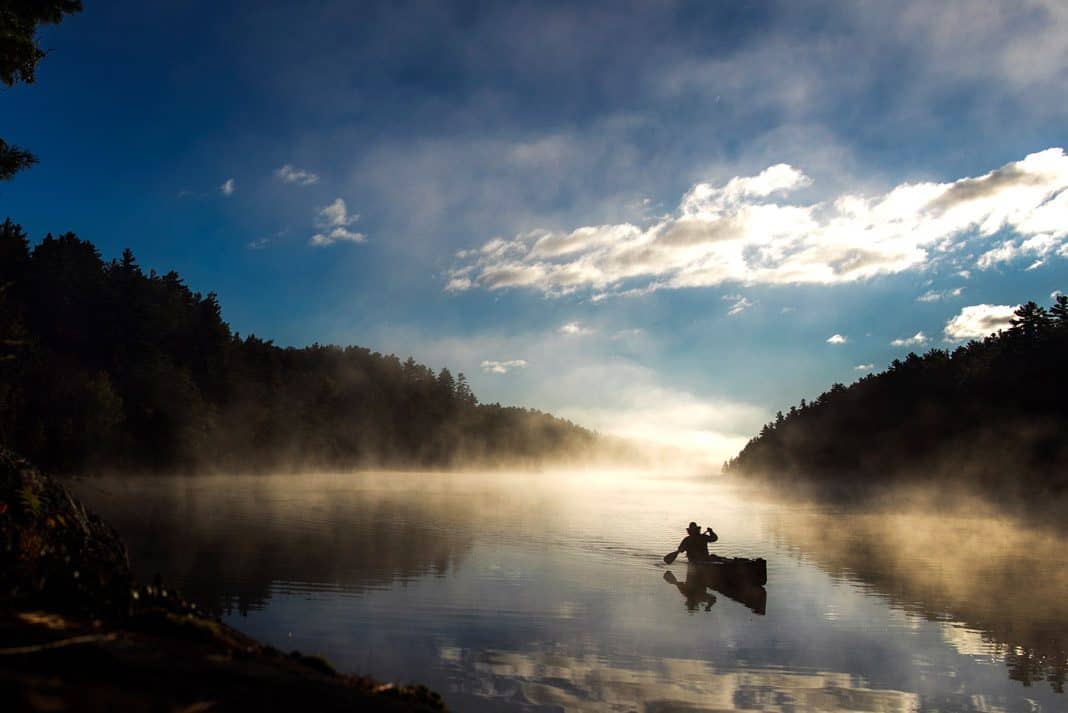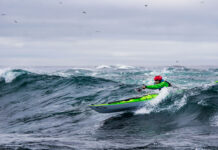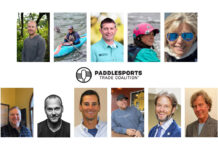The good news is there are a lot more people going out canoe tripping. Canoeing is huge right now and it’s families, young couples and new immigrants really getting into it.
The canoeing years big trends
We’re not all Caucasian, wearing a Tilley hat, looking like Bill Mason anymore. I think we’ve progressed—there’s more diversity coming to canoe tripping and that’s great. The only negative I see is we know people are going on shorter trips. The average now is two nights—in the ‘70s it was 10 days. If you only go out for two or three nights, it’s not really enough time to get comfortable and reconnect to nature. It’s like checking an experience off a list instead of something more meaningful.
—Kevin Callan, The Happy Camper
An overwhelming percentage of our sales are to the older generation who may not be able to participate without ultralight equipment. The way the purchasing for personal use and daily rental is going, 10 years from now there will be no desire for any equipment not focused on light weight and ease of use.
—Jeff Hill, H2O Canoe Company
Going to extreme and remote wilderness places and getting away from people is the new luxury. If you have enough money you can do whatever you want, but at a resort or on a cruise you’re doing it with 100 other people. Exclusive is emerging as luxury in tourism. The good thing is it’s just not possible to go for a short period of time to the Arctic—because of weather windows and flights, it’s not practical to go on a four-or five-day trip so we go for two weeks. You get to actually immerse yourself in an environment.
—Steve Ruskay, Lead Guide, Black Feather
Especially in this hectic lifestyle, people want a techno detox. They want to connect with each other and nature and disconnect from the stresses of the outside world.
—Michelle Savoie, Voyageur Wilderness Programme
Now and then in canoeing
Ten years ago, most paddlers knew who Bill Mason was, there were still a few places in the world where you could drink directly from the river, and a few hardcore wilderness paddlers were not in old folks’ homes. Ten years from now, I fear multi-day private wilderness tripping will be a thing of the past and virtual reality canoe trips will be all the rage.
—James Raffan, Author and Explorer
Ten years ago, people were still going on canoe trips to simply be there and enjoy the experience for what it is. Today, more people are going outdoors with the intention of sharing it with the world via social media. Ten years from now, everyone will have been there, done that and shared it, and the desire for people to actually go there may be vastly diminished. Ten years ago, carbon fiber was exotic. Now it is common in mainstream products. Ten years from now, who knows what canoes will be made of? Carbon nanotubes and transparent aluminum?
—Randy Mitson, Marketing Manager, Algonquin Outfitters
Next big canoe story
Trade tariffs imposed by Canada and the EU as a retaliation for U.S. steel and aluminum tariffs could be resolved at any time or not at all. Until a solution is implemented, the tariffs will increase the prices of U.S.-made canoes abroad, strengthening the positions of Canadian and EU canoe manufacturers.
While good for those Canadian and EU companies, the tariffs will contribute to inflation in outdoor stores and will make certain U.S.-made canoes more difficult to find abroad. That said, canoe manufacturers tend to enjoy strong local markets due to the high costs of shipping, so I don’t think there will be as big of a shakeup as we will see in the kayak market.
—Johno Foster, Esquif Sales Rep
We’re losing ash trees and it’s going to drive up the price of paddles. Five hundred million of 10 billion trees have been destroyed, mostly by invasive species like the emerald ash borer beetle. In five years, we’re predicting commercial logging of ash will be over and we’ll have to move to other woods to supplement. Ash was always the least expensive of the high strength, high flexibility, high impact woods, so it’s going to affect price. It’s not a happy future for woods.
—Brian Dorfman, Owner, Grey Owl Paddles
Climate change has made it harder to predict when conditions will be best for paddlers. Water levels have been less predictable in recent years—2014 and 2017 were on the upper end of historic flows, and in 2018 we had the lowest levels anyone can remember across the trail.
—Karrie Thomas, Director, Northern Forest Canoe Trail
Wilderness canoe tripping is offered a spot in the next summer Olympics. We decline because they’re obviously missing the point.
—Paul Mason, Instructor and Cartoonist
Safety on the water when canoeing
167 paddlers died on the water in 2016, and that’s 167 more than is necessary. What’s missing is Coast Guard data on what sort of craft was involved in each death. From my observations in the Midwest, all the deaths I saw in the media were in kayak-shaped objects purchased at the lumber yard or feed store, paddled by beginners who didn’t know what they didn’t know.
I recommended to the Coast Guard to collect better data than just the checkbox of kayak. Education is also critical, and my peers and I do our best to educate as many paddlers as we can, but we can’t educate a customer who buys a kayak on a whim at Walmart on a Friday night in April and takes it out Saturday morning.
—Darren Bush, Owner, Rutabaga
I see more people who don’t want to put in the time to gain skills. Nowadays, when I need to fix the pipes in my kitchen, I go to YouTube. But you can’t learn risk management from YouTube or in a weekend outing. There are some people who just shouldn’t be out on the water, but who is going to stop them? Back in the day, Omer Stringer used to be at Canoe Lake [in Algonquin Provincial Park] showing people how to paddle.
—Kevin Callan, The Happy Camper
Paddling-related drownings often make the news, then get associated with outdoor adventure even though it’s often cottage-based or front country activity.
For paddlers, there are lots of campaigns around wearing a life jacket but there’s a knowledge gap between wearing a PFD and just having it with you. As paddlers get more experienced they get more on board with safety messages. Wearing your PFD is just good risk management, and people who are good at risk management are good at wilderness travel.
—Steve Ruskay, Lead Guide, Black Feather
Canoeing technology in the wilderness
Connectivity really changes the dynamics of trips. With greater access to the Internet, it can create a lot of pressure to stay connected at all times. It is vitally important we continue to promote and facilitate wilderness trips for the sake of mental health and to alleviate the pressure and dependence people feel towards technology.
—Mark Stenzig, Up North Adventures
With technology, people are in communication constantly even when out on trips. We ask visitors to keep their devices discreet—we don’t want to hear notifications—but from an operator’s perspective it’s great. We can be in touch with our guides in the field and not just for emergency stuff, but for small logistical issues.
—Steve Ruskay, Lead Guide, Black Feather
The most overrated piece of canoe camping kit
Possibly the PFD.
I say this because in our myopic safety-besotted world, we’re looking for ways to abdicate old-fashioned training and common sense to technology. Yes, a PFD is both thermal protection and buoyancy but putting one on does not guarantee anything if you’re untrained or just naturally disposed to do silly things.
Many of us are far too ready to shift reliance on self, experience and training to the false security of our gadgets. How many outdoors people carry a GPS unit they really don’t know how to use and end up knowing exactly where they are when they die of foreseeable self-created conditions? How many people die in rough or cold water each year wearing a life jacket, thinking this device would have saved them from themselves? Too many. Also, anything made with Gore-Tex.
—James Raffan, Explorer and Author
Leave your coolers in the car. We should all be eating less meat and there’s something to be said for cooling your adult beverages in a lake or river.
—Johno Foster, Esquif Sales Rep
Canoe camping offers the opportunity to bring luxuries that aren’t as easy to bring in other human-powered outings. We joke about bringing the kitchen sink and, thanks to NRS, we often do. What should we leave behind? Leave the mobile phone behind. If you must bring the phone to call your take-out shuttle, shut it down. Disconnect from the grid and reconnect with nature.
—Bill Kueper, Vice-President, Wenonah Canoe










Did anyone if these guys have something positive to share?